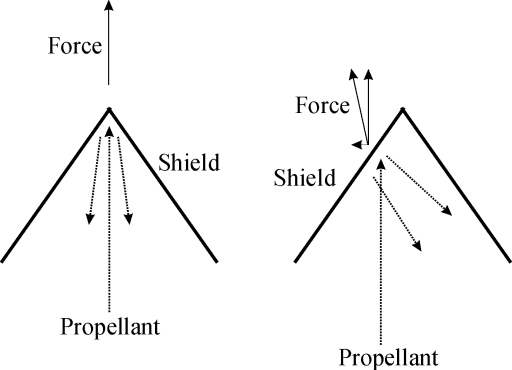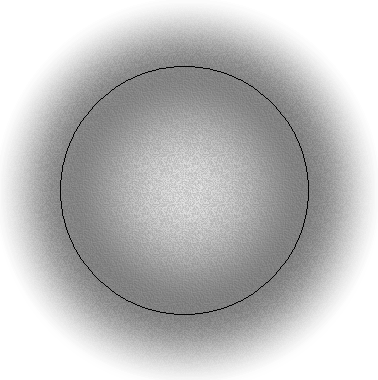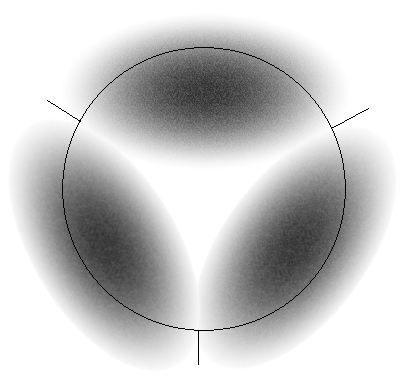
Imagine the space ship would be built in the shape of a funnel or hollow cone, which catches the propellant stream. This can keep the space ship in and on top of the propellant stream. As soon as the ship starts to drift to one side, a force towards the other side results.

Figure 1: stabilizing force to drive back the space ship (schematically depicted as cone) into the propellant stream.
But this force will also start to turn the space ship upside down, unless its center of gravity is low enough. Keeping the center of gravity of the space ship low will make building an aerodynamic and light weight space ship difficult.
Another approach to keep the space ship within the stream of kinetic
propellant the propellant could be depisited in space with an average
density that resembles a circle. In the center the density is lower
than to the sides. If the space ship drifts to one side, it will get
more thrust at this side. The side will move "upwards" or faster and
tilt the heat shield / pusher plate so that the deflected kinetic fuel
creates a force that pushes the space ship back into the center of the
stream of kinetic fuel.
Another way to think of it is: the hollow spot in the middle is pulling
the pusher plate down.

Figure 2: circular density, shematic. Black circle depicts heat shield / pusher plate.
That ring configuration could also be approximated by three
density spots (e.g. with elliptic density distribution). This also
provides
a way to stabilize "horizontal" rotation using three fins that are
shaped to stay out of the stream. Furthermore with this three-point
density it could be easier to leave open a defined escape path in case
the launch has to be aborted. (No kinetic fuel depositing device must
collide with space ship while aborting launch.)

Figure 3: three-point density, shematic. Black circle depicts heat shield / pusher plate. Black lines depict positions of fins.
All of these methods work best if a certain amount
of kinetic propellant misses the space ship. So this is probably the
way to go if propellant from space is very cheap. Furthermore in each
of these cases the heat shield must be designed larger and therefore
more heavy than it would have to be for a more uniformous distribution
of kinetic propellant. (But note also that a completely uniformous
distribution without any fuel missing the pusher plate is impossible to
achieve.)
Some more analysis about stability is necessary. Will
the induced oszillation need active dampening, so it will not become
stronger and stronger?
As described on the main page, an orbital maneuvering system or some actuator that varies deflection of the propellant could be used to stabilize the ship. Selectively applying on-board fuel is a special case of such an maneuvering system.
Another and possibly more efficient way could be not to have complex
and heavy actuators on the space ship but use the depositing mechanism
of the propellant (which is necessary anyway) as controlling actuator.
I.e. create a control loop for depositing kinetic fuel actively in a
way that pushes the space ship back on course into the fuel stream as
soon as deviations are observed. Of course this assumes that this
kinetic propellant is deposited in space only a very short time before
impact.